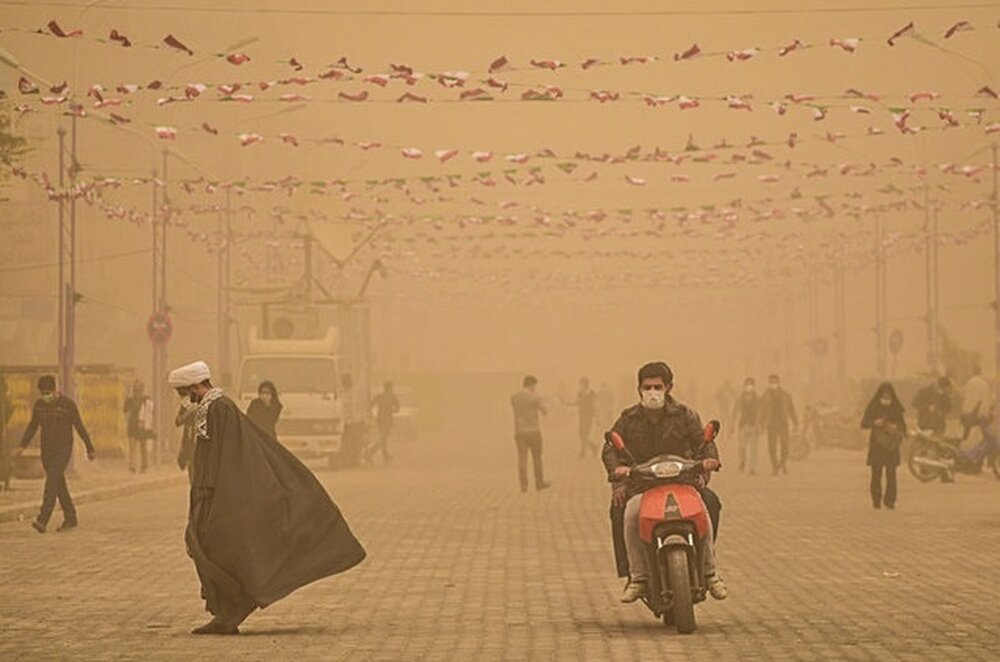INSUBCONTINENT EXCLUSIVE:
So, a convention is needed to be set up in the region to come up with a solution, Abdolreza Faraji-Rad, a professor of geopolitics, has
said.The SDSs phenomenon has been exacerbated in recent years due to climate change, which is caused by areas in Iraq, parts of Iran, Syria,
Jordan, and even Egypt and Saudi Arabia, and with the slightest movement of the wind, these dust particles rise and move slowly to the east
and northeast of Iran, he said.Of course, it is impossible to claim that SDSs are totally out of control, such phenomena require
comprehensive regional cooperation, he stated.A convention consisting of Iran, Iraq, Turkey, Kuwait, Qatar, Bahrain, Saudi Arabia, Jordan,
Syria, Egypt, and possibly Sudan, should be formed to provide funding and come up with a common solution to deal with the phenomenon, he
also suggested.The SDSs phenomenon has been plaguing the country for several years and has caused problems in many provinces
According to experts, natural and human factors are involved in the occurrence and severity of this phenomenon which is mainly caused by
excessive consumption of water and drying up reservoirs.Over the past two years, the precipitation rate has been on a downward trend, as a
result, sources of sand and dust storms (SDSs) have increased compared to a year before, Ahad Vazifeh, head of the national center for
drought and crisis management has said.A convention consisting of Iran, Iraq, Turkey, Kuwait, Qatar, Bahrain, Saudi Arabia, Jordan, Syria,
and the dust-raising areas have been increased, he lamented, ISNA reported.The internal dust sources are estimated at 34.6 million hectares,
generating an average amount of 4.22 million tons of dust per year, about 1.460 million hectares are dried wetlands.Some 4.23 million tons
of dust are raised per year, which means the loss of soil fertility will hit the agricultural sector.All the SDSs sources are not located in
Iran, 300 million hectares in the neighboring countries are giving rise to SDSs, which transport dust into Iran
The total dust density is estimated at about 150 million tons.In fact, the dust is raised from Turkmenistan, Uzbekistan, Afghanistan, and
sand and dust storms (SDSs) requires strengthening diplomacy, and it will never be eradicated unless international institutions reach a
consensus.Dariush Gol Alizadeh, Head of Iran's National Climate Change Office (NCCO) of the Department of Environment, told IRNA on Tuesday
that the hotspots of the dust haunting the country in the last few days in eastern Syria, western Iraq, as well as Jordan, and Saudi
Arabia.These dust sources have appeared many years ago, and due to the drought and water shortages that have occurred in recent years, they
have both intensified and increased in number
In fact, abandoned agricultural lands in those countries are a source of SDSs, he explained.If serious action is not taken in the form of
diplomacy and international institutions do not comply with the requirements to eradicate SDSs, the countries will always be haunted by the
agricultural products, and on the reproduction of plant species and activities such as beekeeping, he further noted.At present, this

